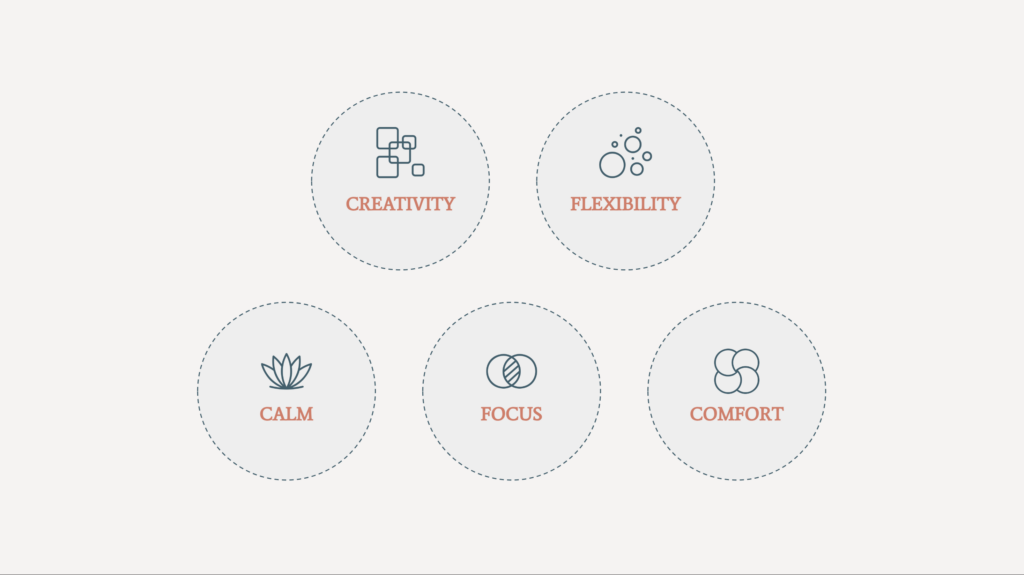Look up from your screen for a second. Where are you right now? Do you feel comfortable, curious, a bit cramped? Notice how the environment around you affects your experience.
Humans constantly change their environment, and in turn, the environment changes our behaviors. Environmental psychology focuses on the interplay between people and their surroundings: how our environment affects the way we think, feel, and act.
While environmental psychology is used in many fields such as interior design, architecture, retail, education and more, it also offers practical insights that can be applied to everyday spaces. From organizing your desk to choosing the best places to work, these principles can help you create an environment that enhances your creativity, productivity, and overall well-being.
The Basics of Environmental Psychology
The Journal of Environmental Psychology defines this branch of psychology as the “scientific study of the transactions and interrelationships between people and their physical surroundings,” which includes built and natural environments. In short, environmental psychology explores the relationship between humans and the external world.
Originally, environmental psychology focused primarily on architectural design, examining how the built environment influences human behavior. Over time, the field expanded to include various aspects of human interaction with the environment, including personal space, our relationship with nature, and the psychological impacts of environmental conditions.
At its core, environmental psychology is problem-oriented. Solutions are derived from studying physical settings and understanding the direct impact these environments have on people. For instance, incorporating windows, high ceilings, and controllable lighting can reduce feelings of crowding and enhance well-being.
One fascinating topic in environmental psychology is the study of human space, known as “proxemics”, which shows that having a form of personal territory in a public space makes us feel more in control of our environment. That’s why customizing your desk with personal items such as family photos can make you feel more comfortable in an office environment.
But that’s not all — there are many other ways you can apply the principles of environmental psychology to design a personal space that works for you.
How to Design Your Environment with Intention
Creating a space that mindfully enhances your creativity and productivity involves more than just following a set of guidelines. It requires experimentation, as what works for one person may not work for another.
For instance, while conventional wisdom would recommend keeping a tidy desk, studies suggest that a messy desk can boost creativity. “Disorderly environments seem to inspire breaking free of tradition, which can produce fresh insights,” the lead researcher said. “Orderly environments, in contrast, encourage convention and playing it safe.”

The key is to try different setups and observe how they affect your mood and productivity.
- Design your environment for creativity. Whether you decide to keep your desk tidy or messy, keep essential items within reach. Make sure to incorporate personal touches, as personalizing your workspace can boost mood and sense of comfort.
- Design your environment for flexibility. This will allow you to choose your work location with intention. Use different rooms or spaces within your home that align with the task at hand. For example, you could journal from the kitchen table with a nice coffee in the morning, switch to your office space when you start working, and go to a coffee shop when you want to brainstorm ideas, as the change of scenery might encourage creative thinking.
- Design your environment for calm. If possible, work in spaces with natural light and views of greenery in order to reduce stress and improve creativity. Incorporate touches of nature. In addition to creating a relaxed atmosphere, indoor plants have the bonus benefit of improving air quality.
- Design your environment for focus. Consider your sensory preferences. Some people like to work in complete silence, others like to have some background music. You can also experiment with playing white noise to increase your attentional load and block outside distraction.
- Design your environment for comfort. Prioritize good posture. Invest in a good chair and desk setup to support posture and reduce physical strain. You can also enhance your long-term comfort with a cushion, a footrest, or an ergonomic keyboard.
By applying these principles of environmental psychology, you can create a space that supports your productivity and your creativity while enhancing your overall well-being. Experiment with different setups to find what works best for you and remember that even small changes can make a significant impact on your daily life.
